New landscape of Khortytsya after the explosion of the Kakhovskaya HPP and what can be found at the former bottom of the Dnieper River
I left my native Zaporozhye in April to recover from the loss of my loved ones. When I came back in July, a different landscape was waiting for me in places familiar from my childhood. There were new territories, tons of garbage and the famous lands of the Great Meadow, which few living citizens have seen. I managed to make a report on how Khortytskyi Plavniye now looks like, and at the same time to help clean up the new territories.
In the distant 1950, the USSR began construction of another hydroelectric power plant in what was then Soviet Ukraine. It was one of the greatest constructions of that time. 12 thousand people, 1100 vehicles, 30 excavators, 75 cranes, 100 bulldozers, 14 steam locomotives were involved.
The construction resulted in the formation of the Kakhovka reservoir with an area of 2155 km². For 3 years, from 1955 to 1958, it was filled with water, flooding the historical lands of Velikiy Lug. Almost the entire territory went under water, except for a few pieces of land on the southeastern part of Khortytsya Island (Khortytskye plavnye, where I used to walk) and on the left bank of the Dnieper (Domakha).
At around 2:50 a.m. on June 6, 2023, as a result of hostilities between Russia and Ukraine, the Kakhovskaya hydroelectric power plant broke and collapsed. Hundreds of thousands of tons of water rushed downstream, flooding and demolishing everything in its path.
And while downstream of the Kakhovka reservoir everything was subjected to temporary or permanent flooding, above the HPP the water level dropped, bringing the Velikiy Lug territory to the surface for the first time in 68 years.
A new landscape has begun to form in the area around my city of Zaporizhzhya, and the Dnieper has shallowed. Of course, most of the new areas are downstream, in the area of the Yanchekrak River and below, near Vasilievka. Unfortunately, because of the front line there, it is not possible to visit them.
The territory of the island of Khortytsya, so beloved by me, is also closed to the public since COVID-19 with the exception of a few tourist locations.
And yet, I managed to get to the island legally and take pictures of what looks like the bottom of the Dnieper River. And at the same time – to help clean up the tons of garbage that was found in the sand and on it.

It was the morning of July 29, 2023. Outside from the very morning there was a strong heat and sizzling heat, so characteristic of our steppes. Having had breakfast, and having put on comfortable clothes, I set out for the island.
At the exit from the unfinished bridges (they tried to build them since 2005 but could not do it, first because of the total corruption and then because of the war) I turn off in the direction of the plavnye. Here we rode horses and bicycles. It brings back a lot of memories.
Police officers stop the car and ask where I am going and why. I drive on and reach the village of Vegetable Growers. This is the meeting point for volunteers.
Not only cars, but also several large buses are already waiting here. Volunteers came from all over Ukraine for the cleanup.
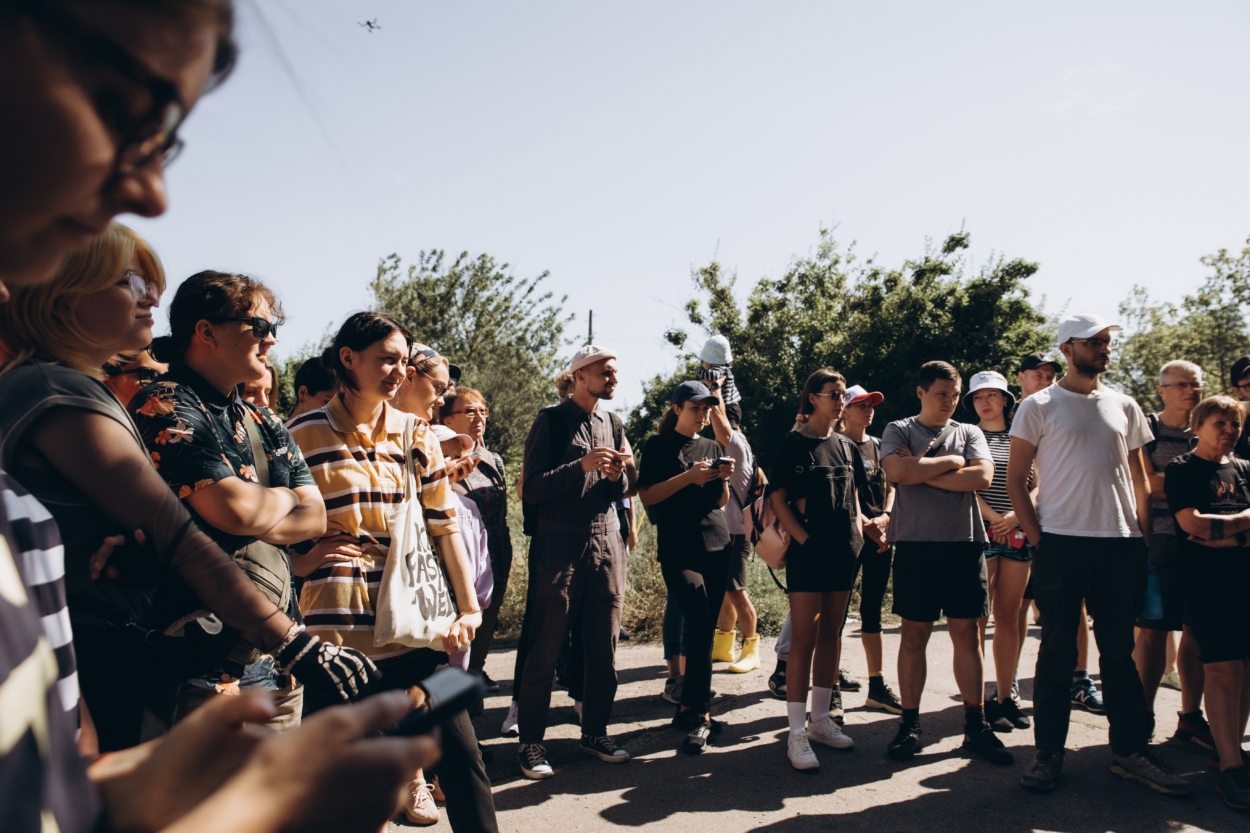
Here we go with a quick update from the Ministry of Emergency Situations. These territories were the site of heavy fighting between the Red Army and the Third Reich during World War II, plus there is a war going on in Ukraine right now. All this led to the fact that among the finds could be not only garbage and scrap metal, but also explosive objects. (By the way, the discovery of mines and ammunition is possible in many different parts of the world, especially if you often go off the marked hiking trails. Know how to behave if they are found).
Afterwards, we grabbed trash bags, gloves, and headed out into the scorching sun (the fact that I didn’t get burned there is only because I always try to use sunscreen).
I was moving through the forest towards the Dnieper, and when I came to an open area, I stopped in a second. Where it had been possible to swim for dozens of meters, the sand stretched for tens of meters. I had seen a similar situation on the opposite bank, but for some reason only here I realized the scale.
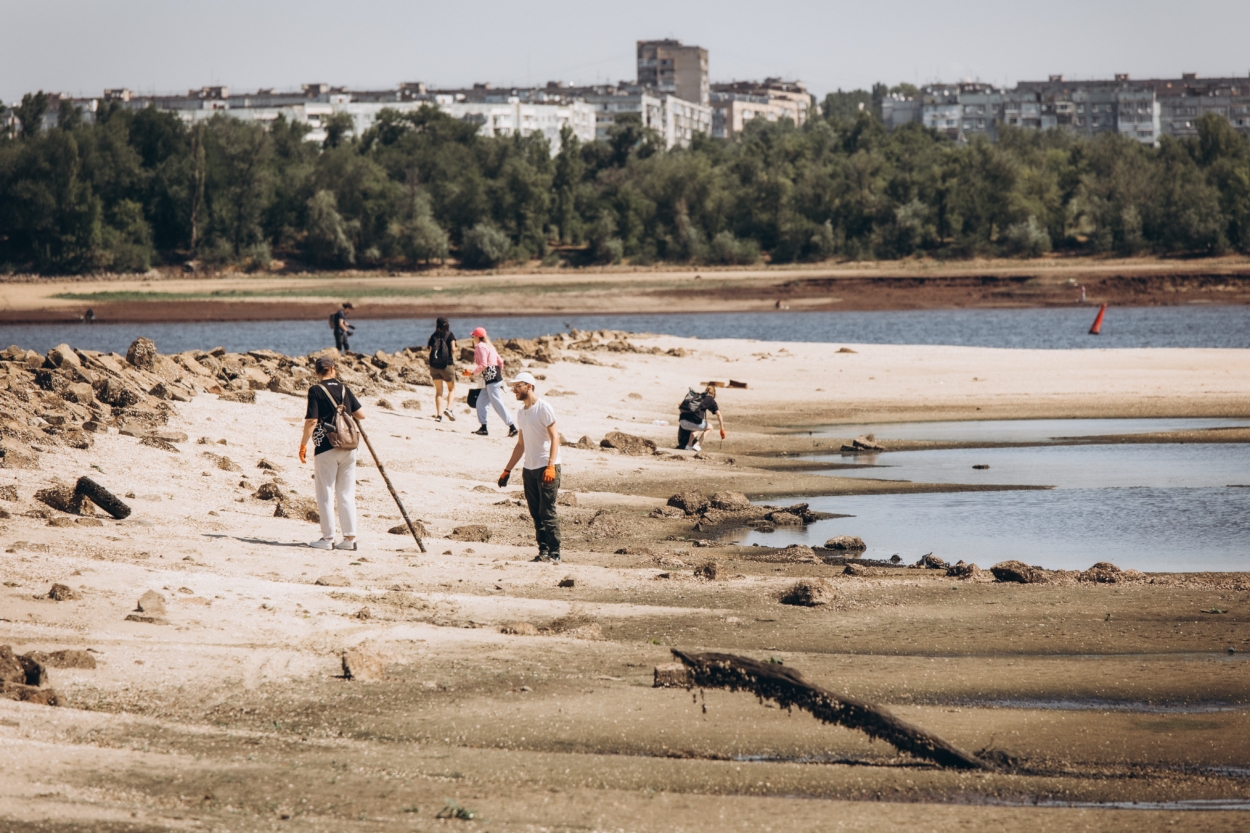
Not much time has passed since the flooding. There is still water in the hollows somewhere. It has bloomed and smells very bad. The small fish have long been eaten by seagulls.
The remains of trees and snags that had been lying on the river bed for so long were covered with small mollusk shells. The mollusks themselves had died, but the shells had dried up under the summer steppe sun, and at the slightest breeze of the wind they made a quiet, melodious sound, tapping against each other.
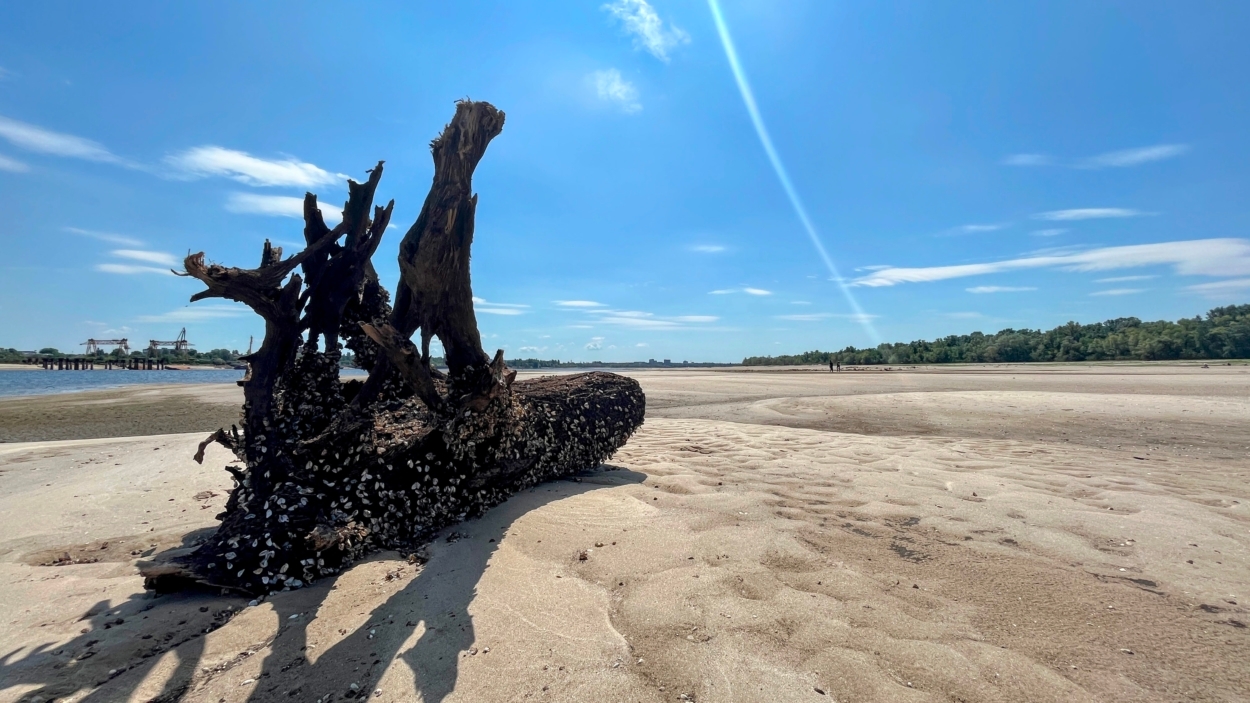
Traces of human activity are everywhere. At first we collected glass bottles: some were produced in the last 10 years and some were over 30 years old.
Then we moved on to more complex tasks. One of them is car tires. Not being able or willing to dispose of them, careless motorists with limited mental abilities for a long time simply came to the river bank and threw the tires into the water. Having settled for days and accumulated kilograms of silt, they literally “sucked” to the bottom and it was a very troublesome matter to pull them out of this swampy sludge. We had to use both knowledge of physics and brute force.
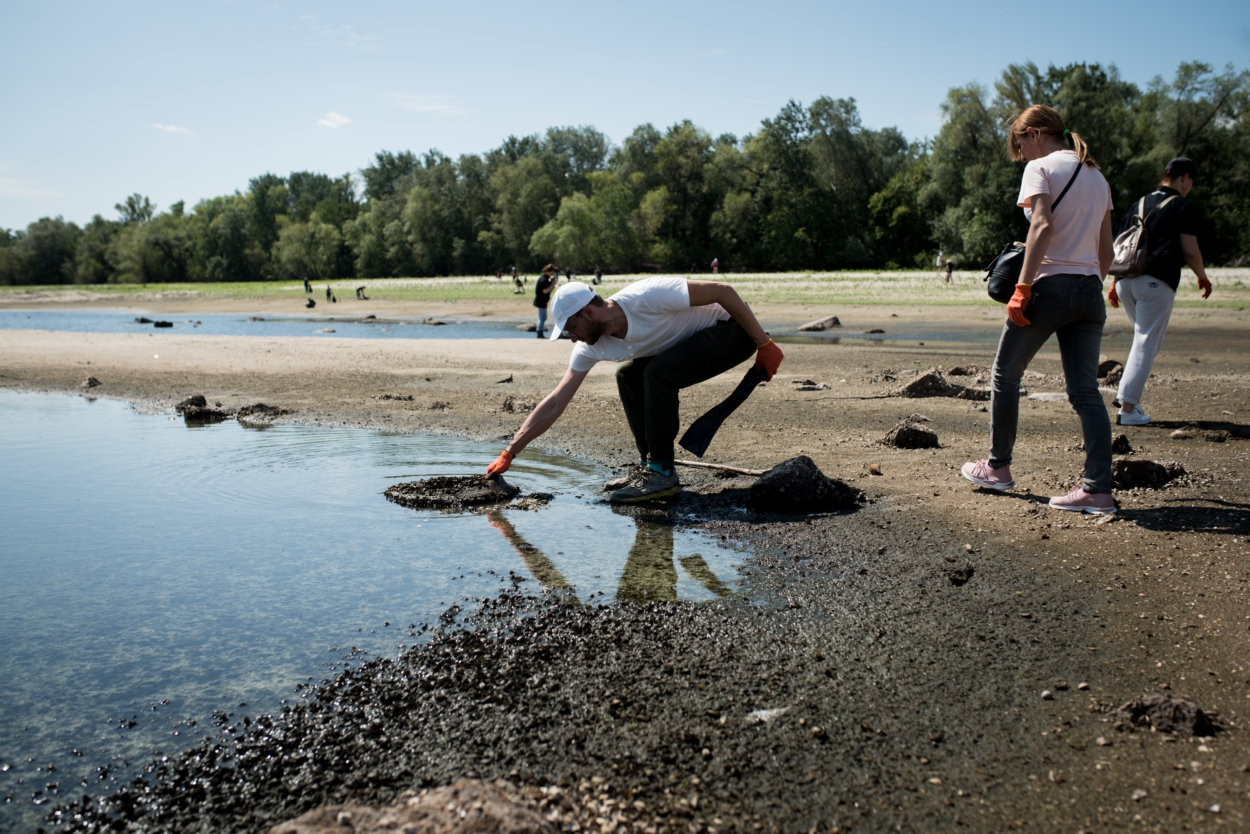
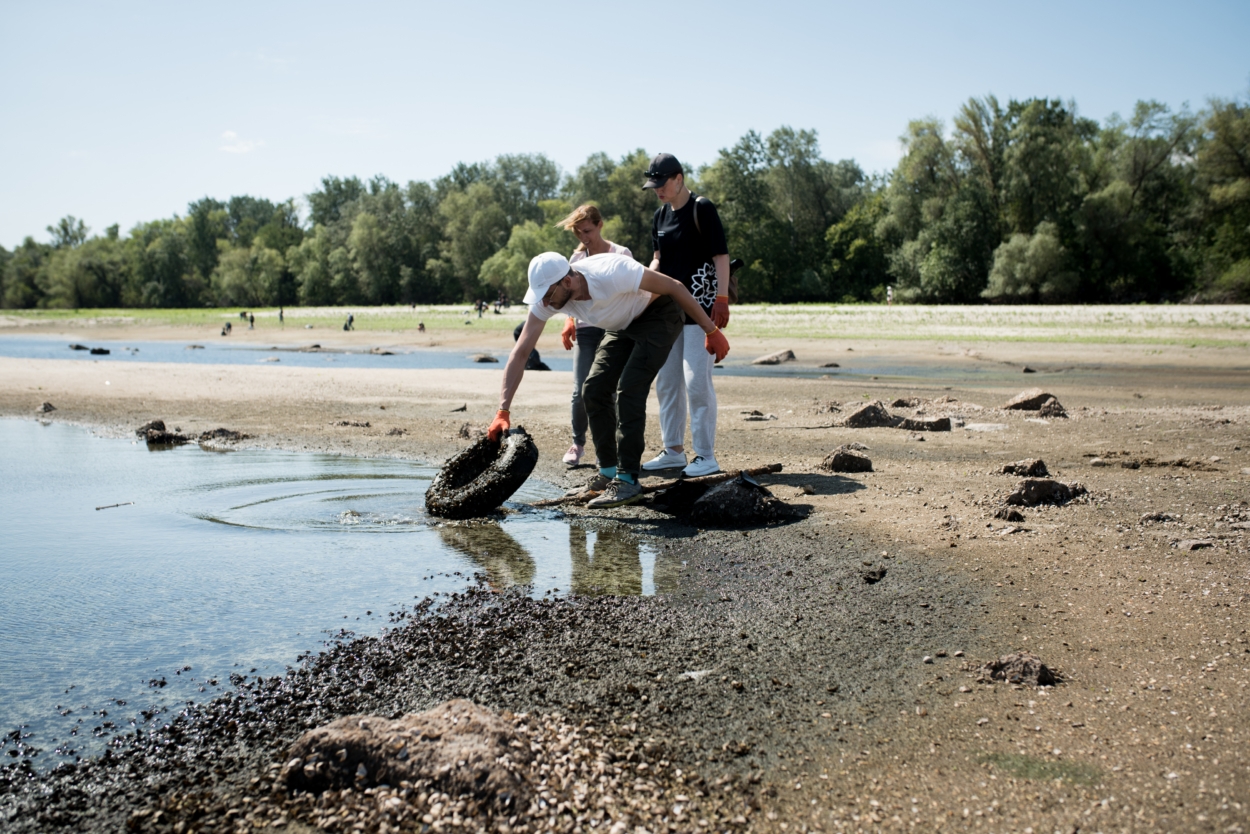
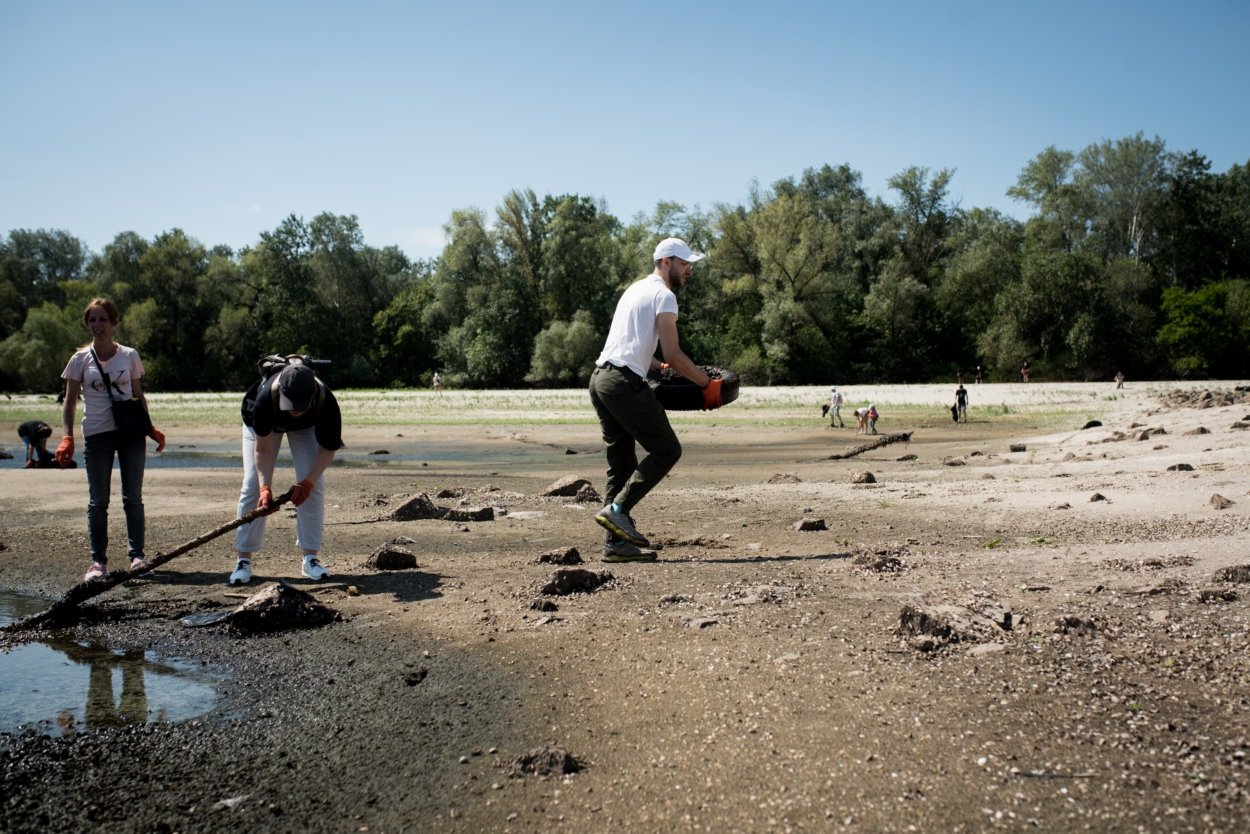
Even a tire with a 15-inch radius was difficult to pull out. When we encountered tractor or truck tires, we piled on them.
Although from the outside it looked like I was just aimlessly wandering around with a bag, like many other volunteers, cleaning these areas was quite laborious. Bending down to each piece of garbage, collecting them in a bag, taking them back to the shore 200 meters away and returning to this activity again and again. All because I hope that someday the war will be over and there will be a beach here again, children will play and young people will walk.
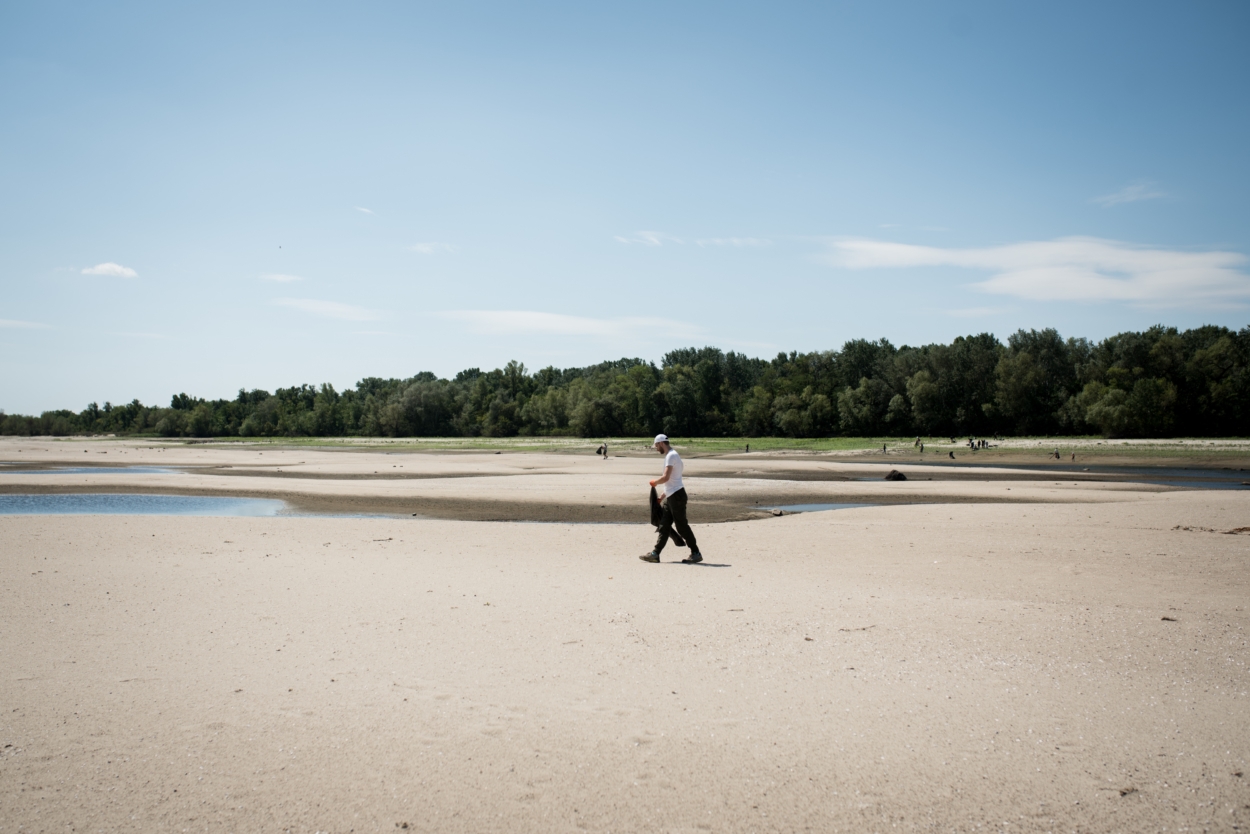
Sometimes it seems that it is possible to walk to the neighboring shore. It’s deceptive, but today many city residents walk ankle-deep in water to cliffs that yesterday were accessible only from a kayak or boat.
The second problem was the ship’s ropes. These metal ropes had buried themselves in the sand and rusted over decades in the water. Some of them were easy to retrieve, some had to be literally dug out. They are not lightweight, and the length of the ropes adds to the challenge. It’s a good thing I have a tetanus shot, I thought, as I almost hurt myself with them.
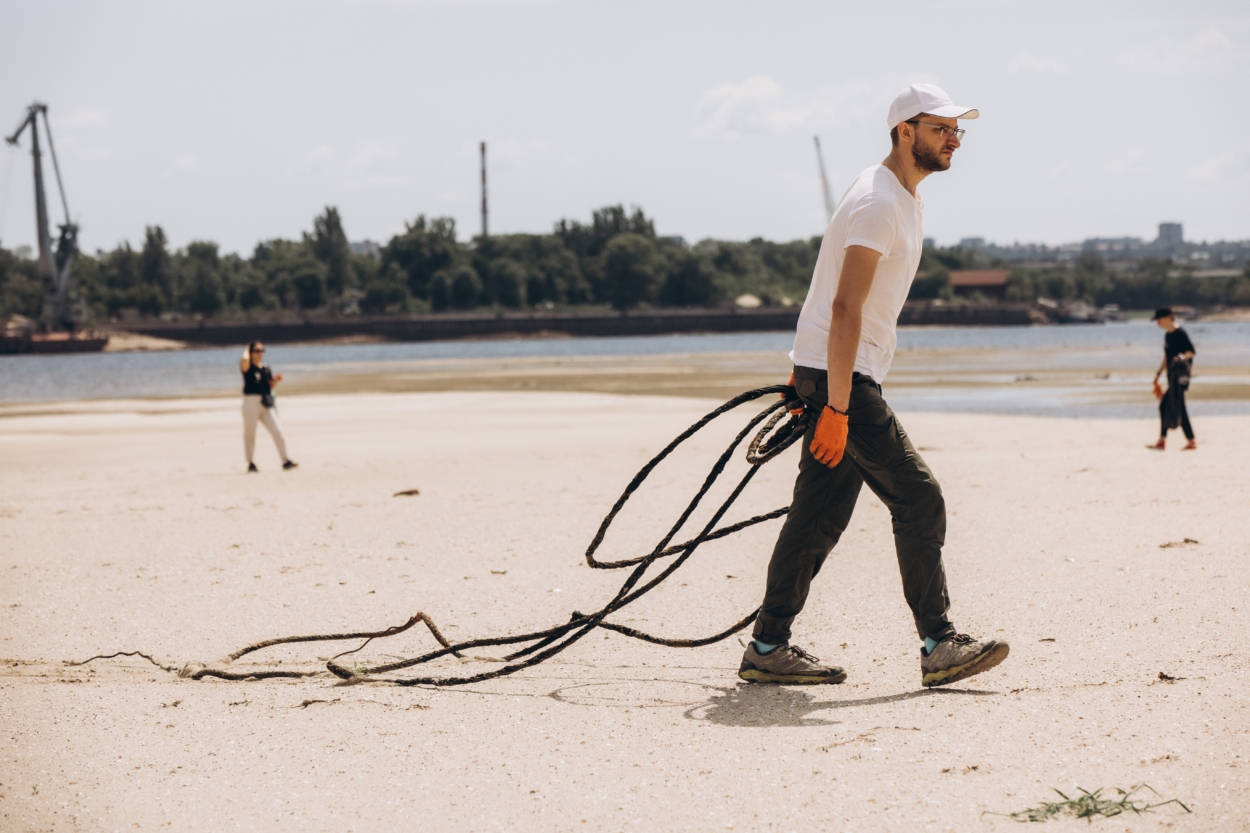
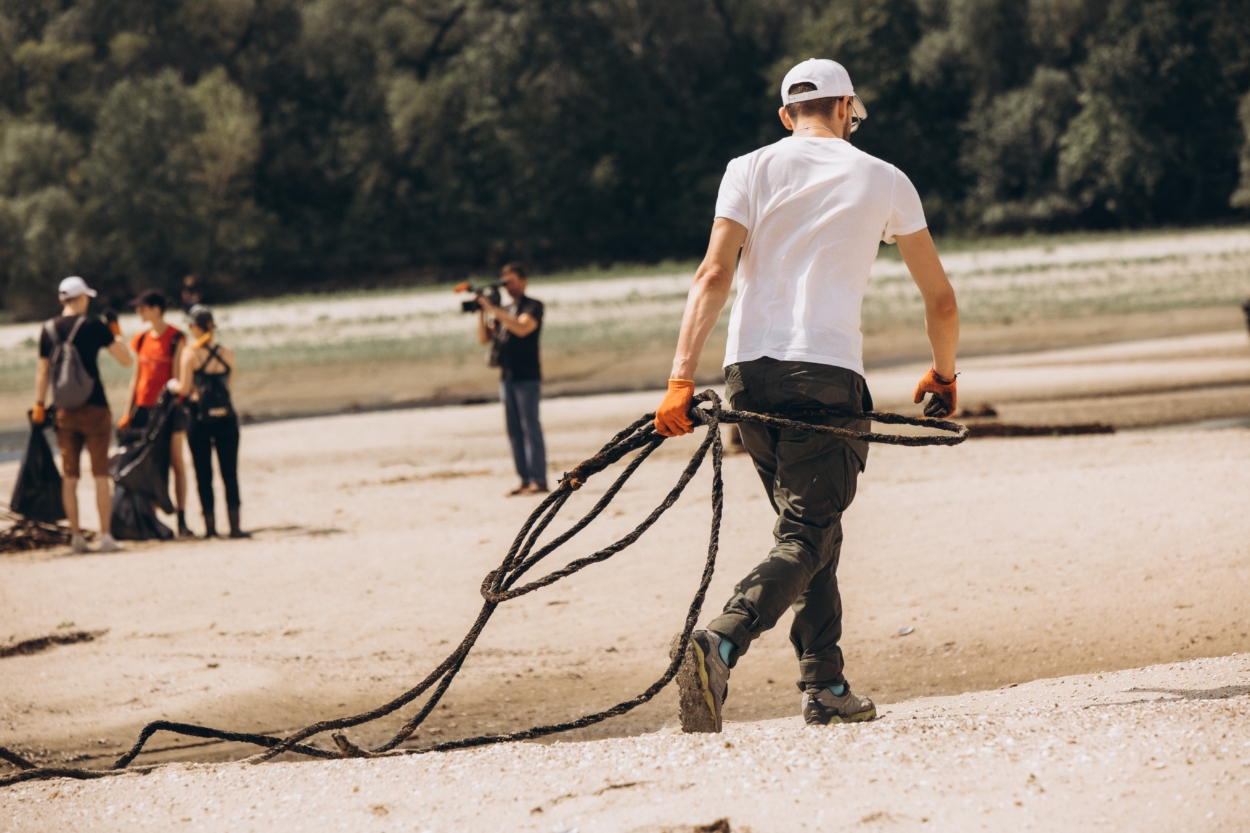
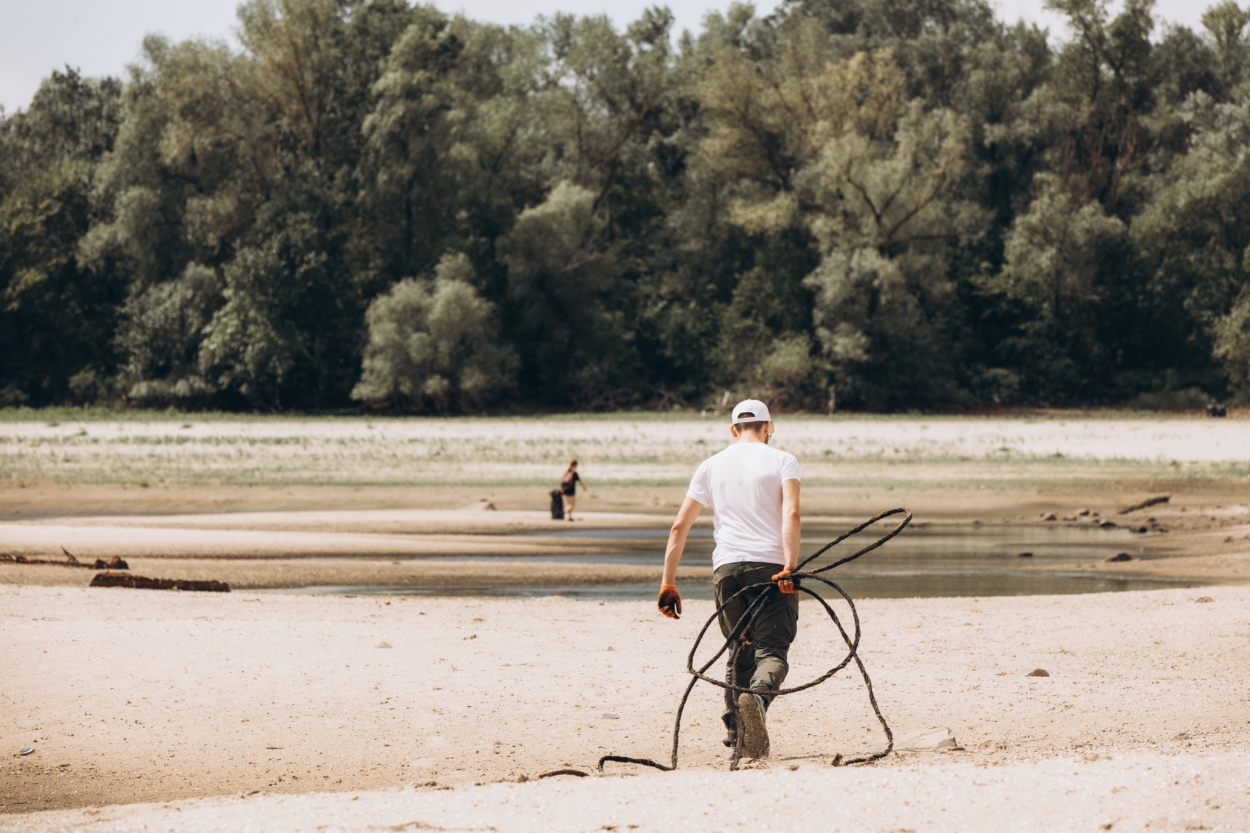
Of course, historically significant finds quickly disappeared in this part. In the first days after the water receded, dozens of illegal diggers went out with metal detectors to the banks of the reservoir, and before the police caught up, they had time to carry away much of what is now traded at local auctions on the Internet.
Some of it remained much deeper. This is especially true for artifacts from the times of the Cossacks. I hope, there will still be an opportunity to study all this for me and as a historian – archaeologist. Admittedly, there was no historian in Zaporozhye who somewhere in the depths of his soul did not dream that someday these territories will be on the surface again. It is a pity that it happened under such terrible circumstances.
The scenery is fantastic. I’d say alien. It is, of course, a terrible man-made disaster, but it gave us the opportunity to see again what we thought we would never see again.
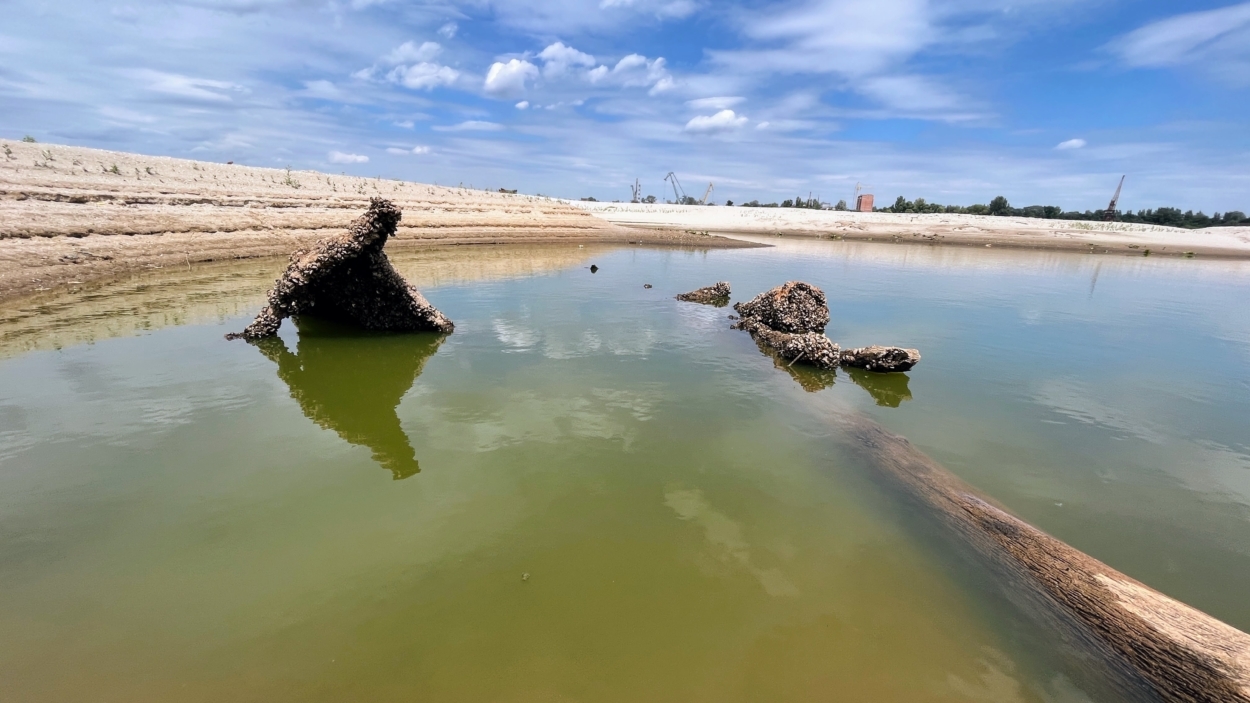
The residual water takes on green hues. There are biological and chemical processes going on there. The odor is not so strong now, but in the first weeks, they say, the stench was terrible.
And here among these expanses of the New Great Meadow lie a variety of objects. There’s a metal box, rusty and showing the signs of time. Or a wheel, like those used on children’s bicycles. Metal barrels. All of these were thrown into the water to get rid of it. But these items have a life of their own and have been found again decades later.
Sometimes finds shed light not only on the history of the Middle Ages, but also on a much newer one. For example, these concrete elements of benches suggest that there used to be a beach recreation area here. Personally, as a lover of Zaporizhzhya history, I will be interested to dig through maps and old photos to learn more about this place.
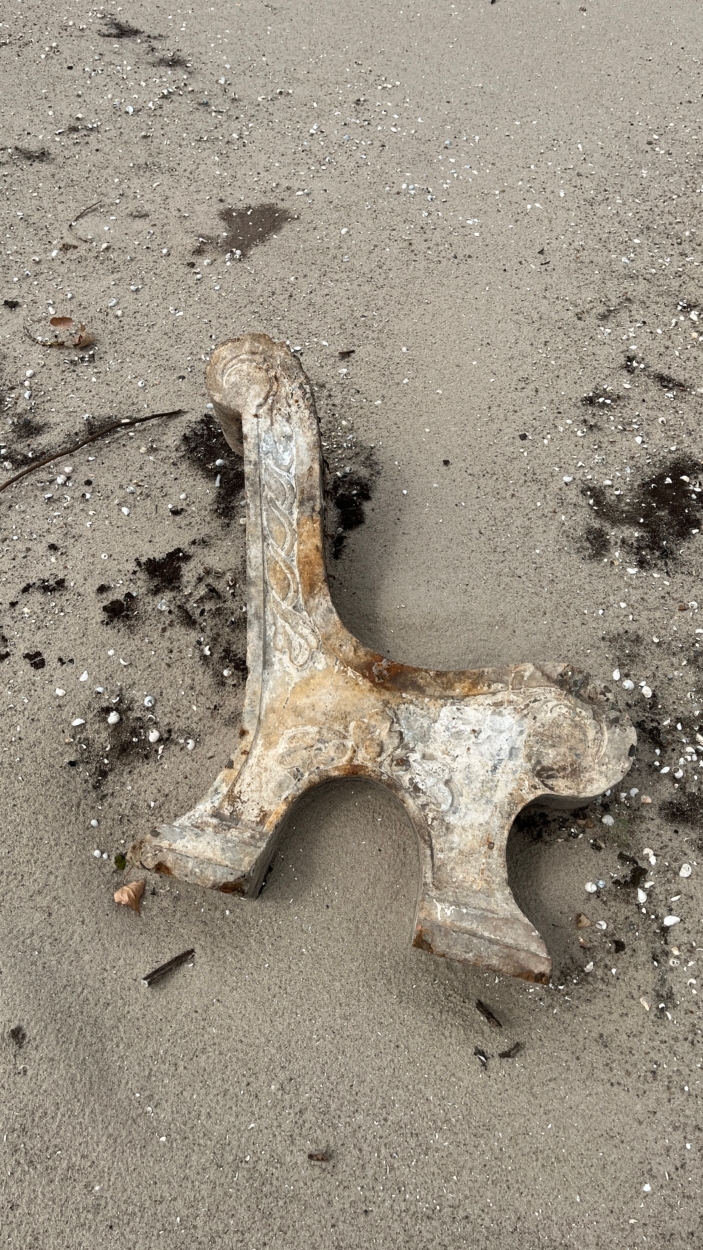
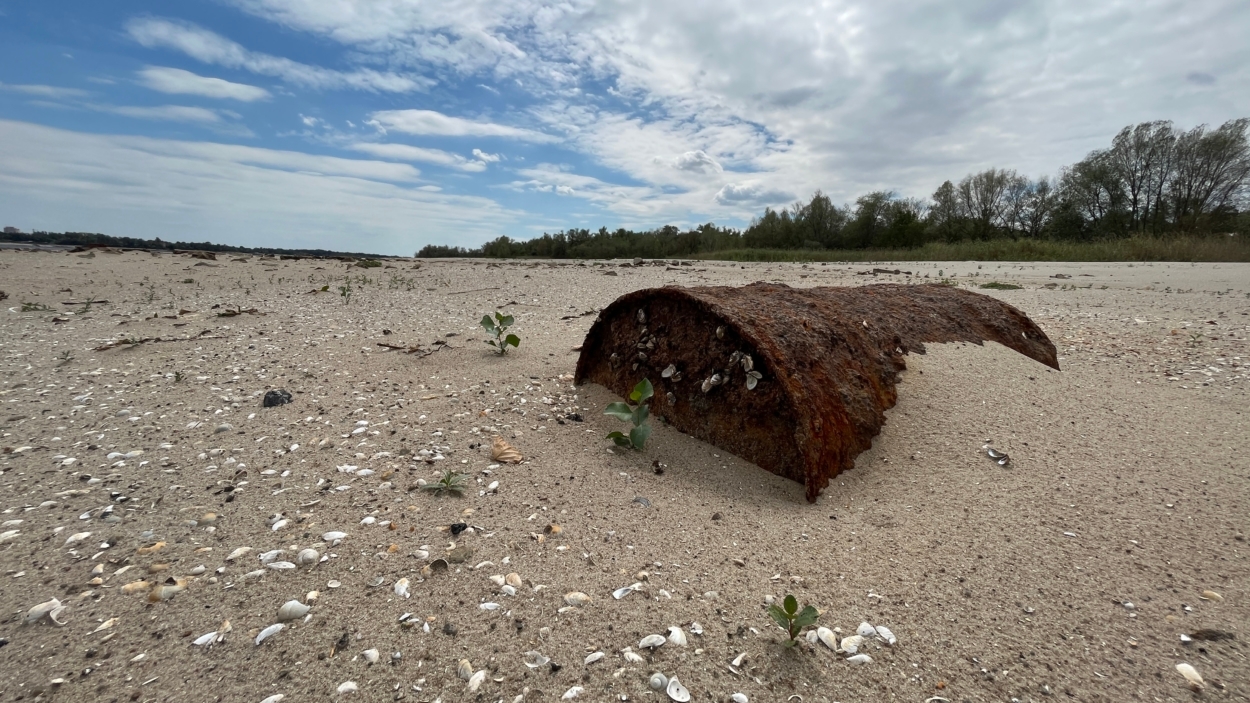
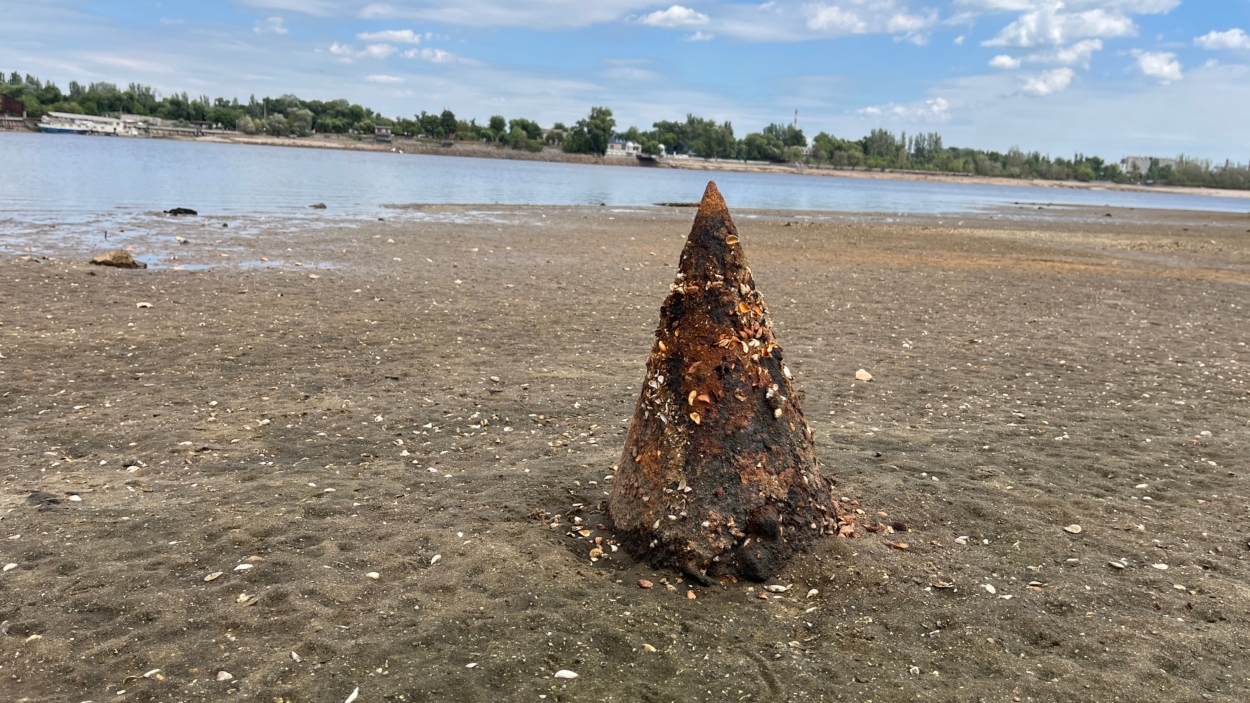
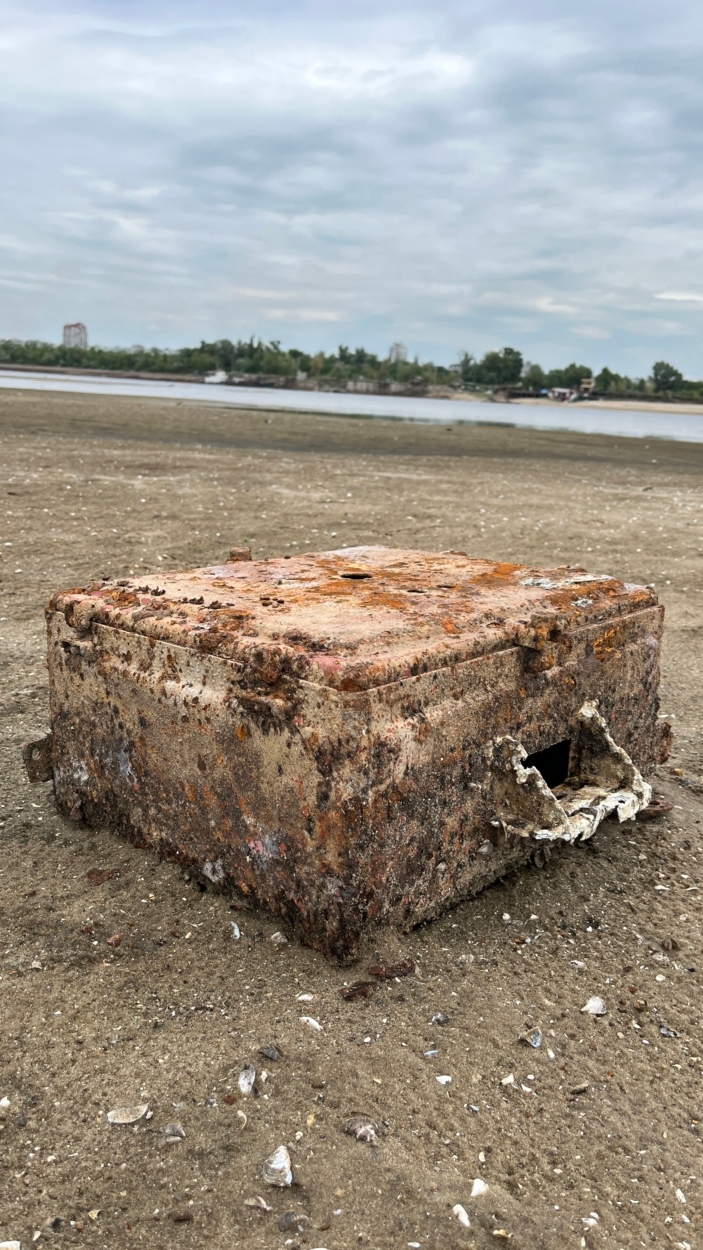
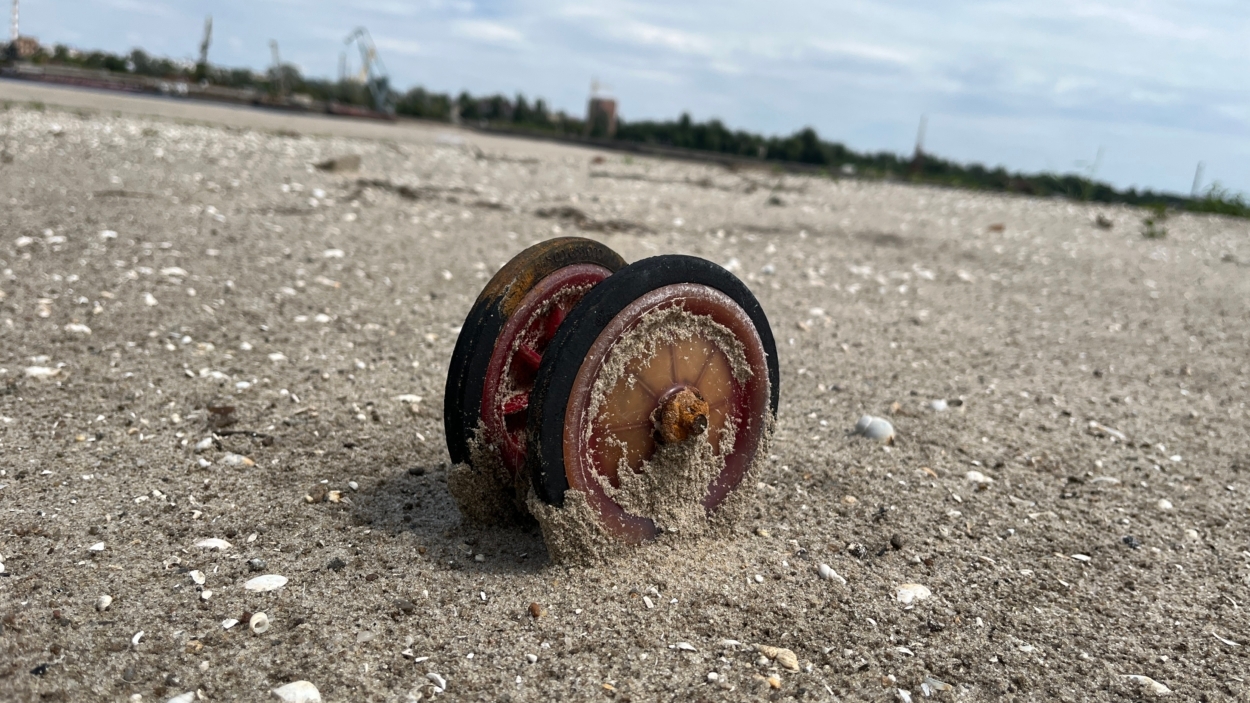
Among all this there are also the remains of large fish, which have not yet been eaten by stray animals. It’s as if it brings us back to reality and reminds us that we are at the site of Europe’s largest man-made disaster. This will be written about in history books, will be told to children and grandchildren. And this is our reality in which we have to live.
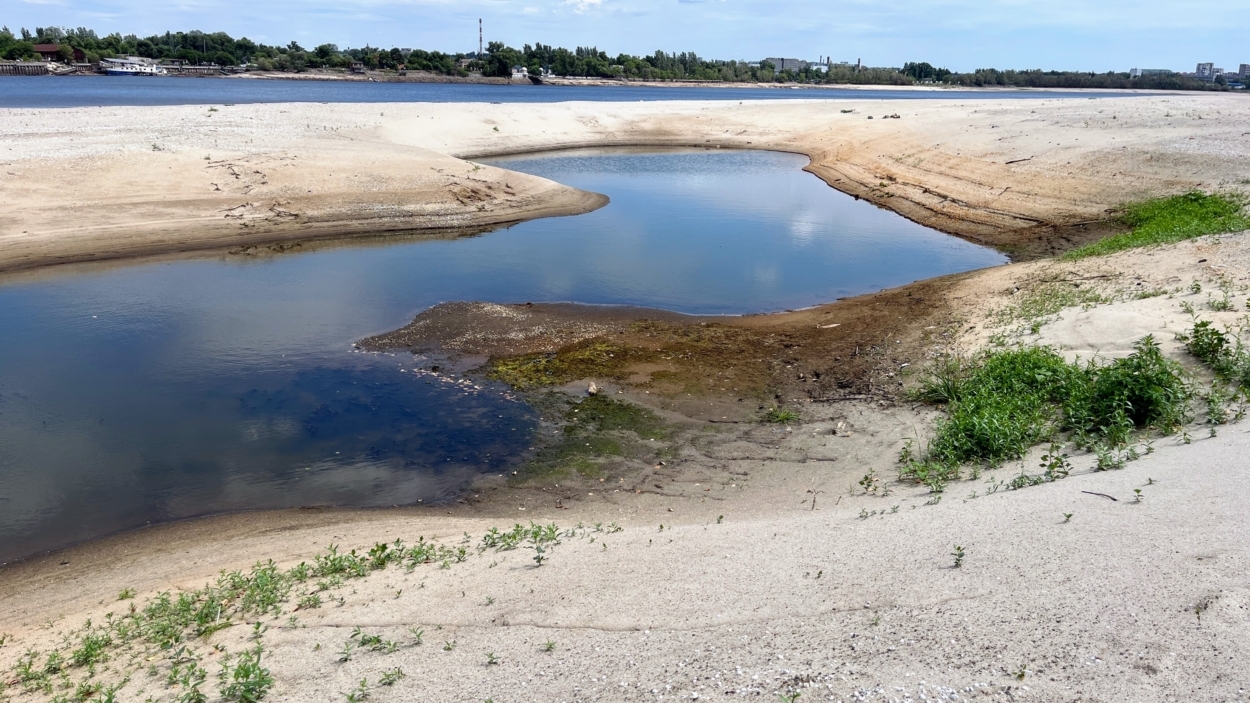
I don’t know how long it will be after the end of the war until everything here is demined and ordinary people can walk around without fear. When I and other archaeologists of the city will go to excavate the territories of New Great Meadow. But it’s bound to happen. And as researchers of the last century, we will have to rediscover this part of Ukraine, which has been under water for more than half a century and explore the mysteries that it conceals in itself.
And yet, these are incredibly fertile soils, which are now still fertilized with silt. Therefore, I am sure that nature will quickly take over and restore these lands. They will once again be covered with greenery and will serve as a great place for the return of fauna (previously inhabited by deer, wild boars and other animals).
But downstream, things are sadder. And the problem is not limited only to Ukraine. At least the countries of the Black Sea basin, especially the coastal areas of Bulgaria and Romania, are affected. I will tell about it in a separate article.
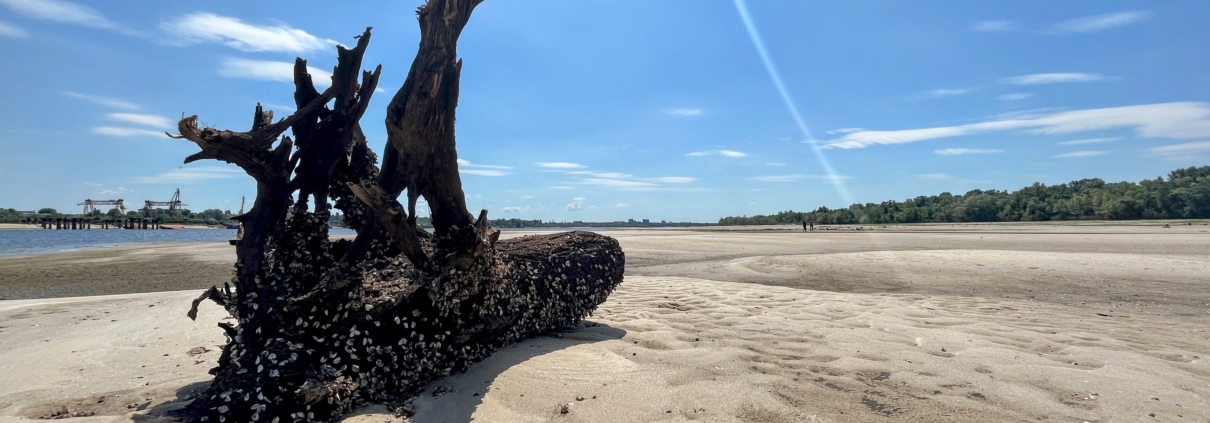
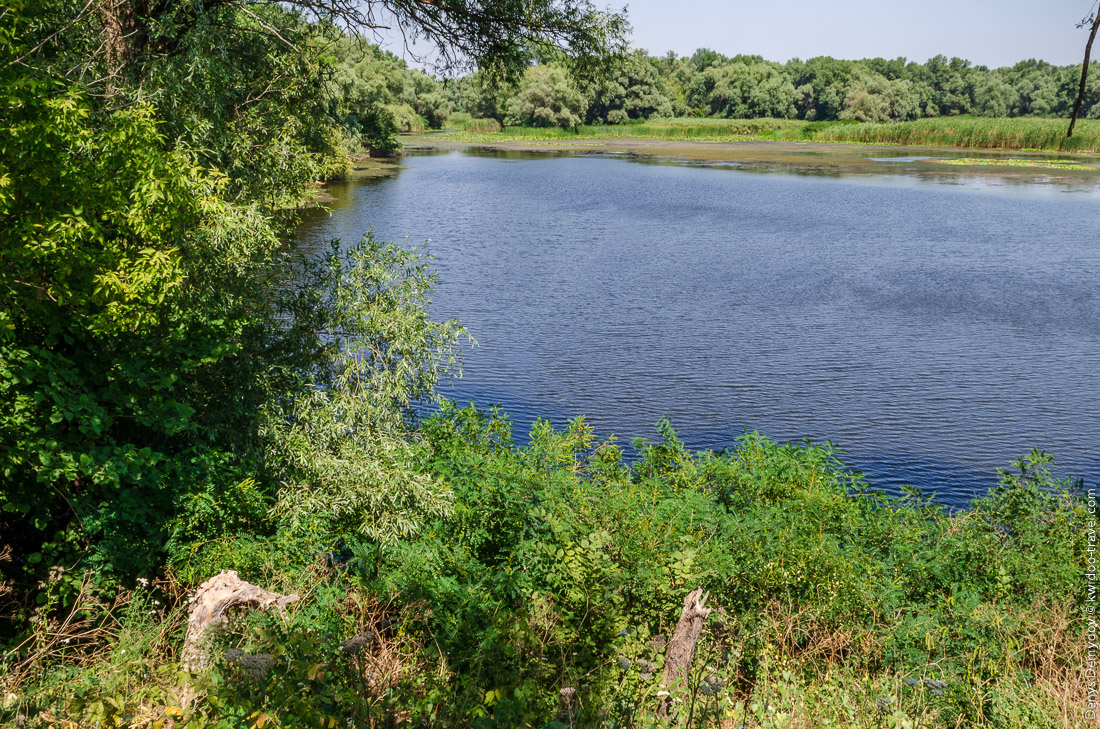



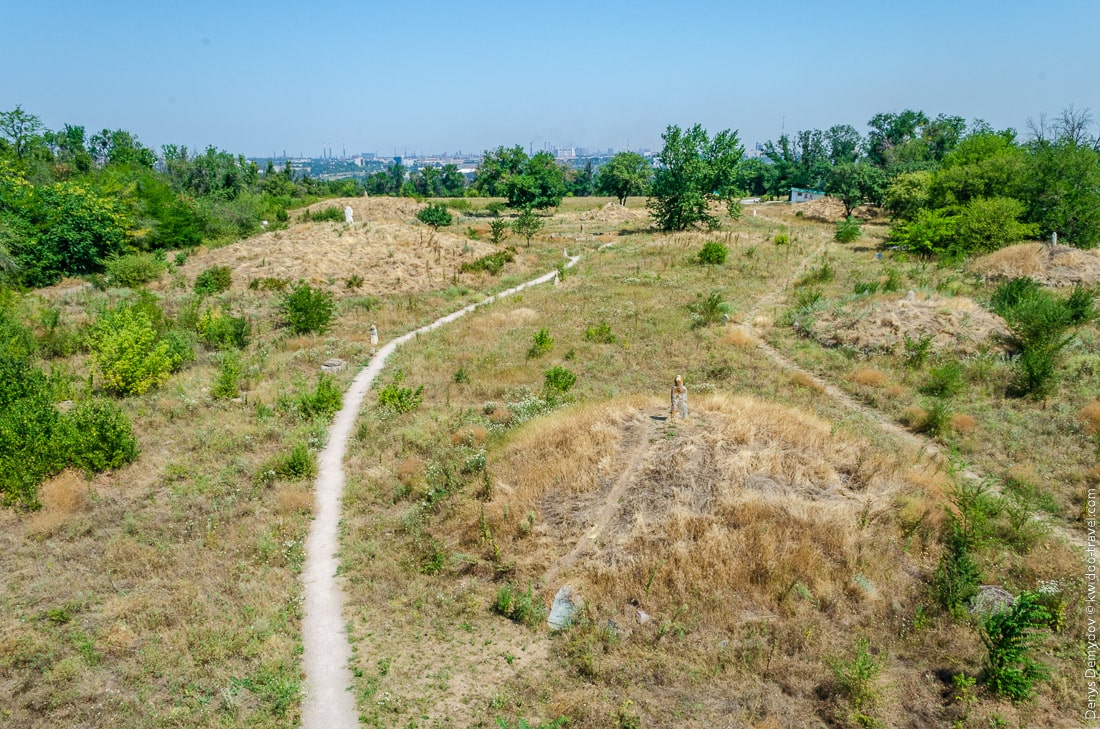


Leave a Reply
Want to join the discussion?Feel free to contribute!